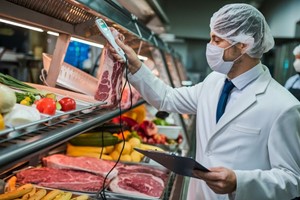In recent years, the food delivery industry has undergone a remarkable transformation, reshaping how people around the world experience dining. From the convenience of ordering meals through mobile apps to the logistics of rapid delivery, this sector has not only expanded consumer choices but also sparked a revolution in the way restaurants operate and interact with their customers.
The Rise of Convenience
The advent of food delivery apps such as Uber Eats, DoorDash, and Grubhub has revolutionized the dining experience by offering unprecedented convenience. Consumers can browse menus, place orders, and track deliveries from a vast array of restaurants without leaving their homes or offices. This convenience has been particularly appealing in urban areas where busy lifestyles often leave little time for cooking or dining out.
Expansion of Culinary Options
Food delivery services have democratized access to a diverse range of cuisines. Customers can explore international flavors, regional specialties, and niche offerings that may not be available locally. This expansion of culinary options has empowered consumers to explore new tastes and support a broader spectrum of restaurants, from small family-owned eateries to high-end establishments.
Impact on Restaurants
For restaurants, food delivery services have presented both opportunities and challenges. Participating in delivery platforms can increase visibility and attract new customers, especially during peak times or when dine-in options are limited. However, restaurants must also navigate commission fees, logistics, and quality control to ensure that delivered meals meet their standards and uphold their brand reputation.
Technological Advancements
Advancements in technology have played a pivotal role in the evolution of food delivery services. GPS tracking enables real-time monitoring of deliveries, ensuring accuracy and efficiency. AI algorithms analyze consumer behavior and preferences to personalize recommendations and streamline operations. Moreover, cloud kitchens or virtual restaurants have emerged, focusing solely on delivery without traditional dine-in spaces, optimizing efficiency and catering to the growing demand for convenient dining solutions.
Future Trends and Challenges
Looking ahead, the future of food delivery services is poised for continued growth and innovation. Integration of autonomous delivery vehicles, enhanced sustainability practices, and further customization of ordering experiences are anticipated trends. However, challenges such as food safety, labor conditions for delivery workers, and environmental impact will require ongoing attention and innovation to ensure sustainable growth and consumer trust.
In conclusion, the revolution of food delivery services has fundamentally transformed dining habits by offering unprecedented convenience, expanding culinary choices, and reshaping the restaurant industry. As technology continues to advance and consumer preferences evolve, food delivery services are likely to play an increasingly integral role in how people enjoy meals, interact with restaurants, and experience the culinary world.












